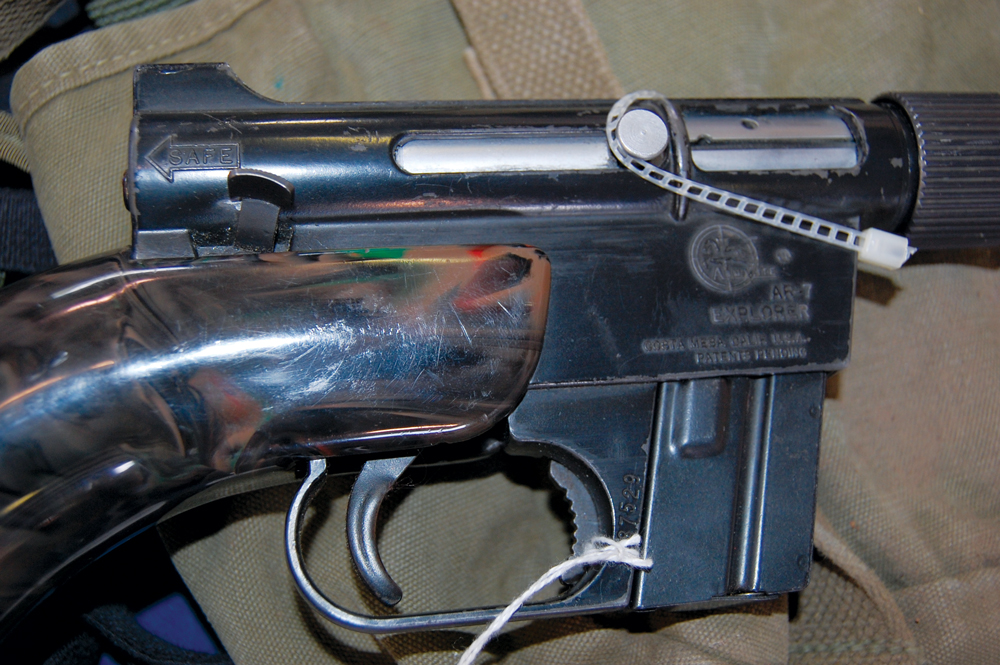[form id=”189833″]

by Phillip Peterson, contributing writer
SURVIVAL RIFLE. When someone says those words what do you think of? I bet many of you think of the AR-7, a .22 LR semi-automatic rifle. The AR-7 is one of the few firearms that have been marketed with the “survival rifle” moniker. In fact, any gun can be utilized as a “survival” gun but relatively few have been marketed as such.
Eugene Stoner designed the prototype of the AR-7 at ArmaLite in the late 1950s. Stoner is well known as the designer of the AR-15/M-16 series adopted by the United States Air Force (USAF) in 1963. The AR-7 was born in a program to design a survival arm for the USAF to arm pilots and other personal in survival situations.
The main survival guns of the time included the M-4, a .22 Hornet bolt-action made by H&R and the M-6, a .22/.410 over/under gun. Stoners’ contribution to the program was not actually the AR-7 but the AR-5. The AR-5 had the advantage of repeat fire over the then-standard M-6, using the same .22 Hornet cartridge. When the AR-5 was adopted as the MA-1, but not placed in issue because of the numbers of M-4 and M-6 survival weapons in USAF inventory, ArmaLite used the research and tooling for the AR-5 in developing the AR-7 for the civilian market.
ArmaLite introduced the AR-7 Explorer on the American market in 1959. The ArmaLite guns were made in Costa Mesa, California. They were offered with three colors of plastic stock: black, swirled green and brown. The early plastic stocks have a tendency to develop cracks around the front opening for the action.
This is caused by over tightening the assembly screw when putting the gun together. As long as they are not stressed further at the cracked area, the stocks can be used for many years. All of the ArmaLite-made AR-7s are now collectible. They will currently sell in the $250 to $400 range. The brown stocks are the scarcest and they bring the higher amounts. ArmaLite ceased operations in 1973 and Charter Arms bought the AR-7 design .
ArmaLite made another variant and sold it to the Israeli military for pilot and aircrew use. The Israelis further modified these rifles, adding the telescoping stock that holds two spare magazines, a pistol grip from a FAL-type rifle, shortening the barrel to 13.5-inches, and adding a front sight based on the K98 Mauser. After Israeli service, some of these rifles were re-imported into the U.S. by Bricklee Trading Company.
The barrels are marked with the BTC identification as required by U.S. laws on imported guns. In order to comply with U.S. federal law, a 3-inch muzzle brake had to be permanently attached in order to meet the minimum 16-inch barrel requirement. These Israeli-contracted AR-7s are the rarest on the U.S. market and have been sold for upwards of $500 for nice specimens.
Charter Arms manufactured the AR-7 from 1973 until 1990. They made the gun in a basic black color and added a silver tone version, which they called the AR-7S. In 1986 a camouflage version was offered, called the AR-7C.

